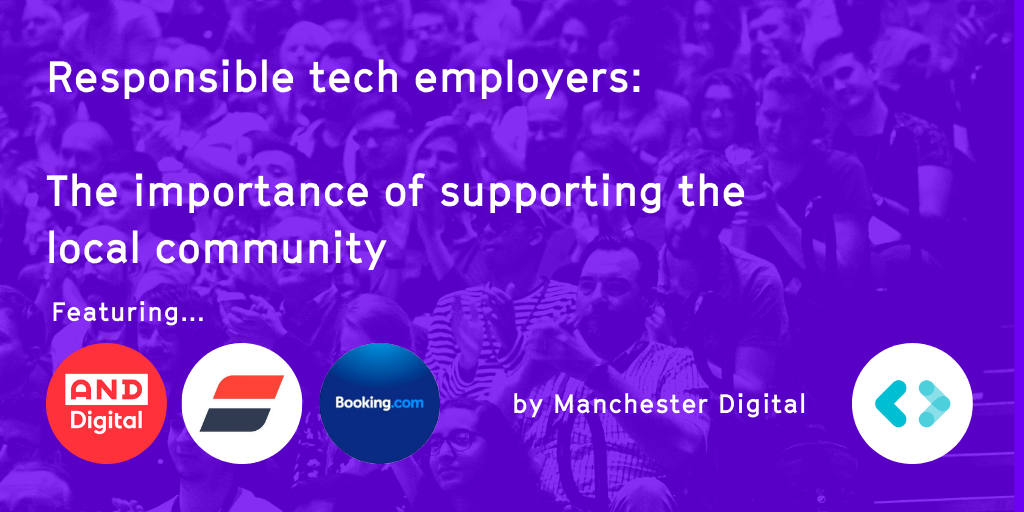
Developing and nurturing the technical skills of your employees is one of the biggest challenges facing public and private sector organisations throughout the world.
There’s no denying that a technical skills shortage is driving this trend. However, it’s important to also recognise that learning and development isn’t just about allowing an organisation to reach its goals. Employees want to continue learning throughout their careers and will migrate towards those organisations that enable this.
Public sector organisations face a unique set of challenges when it comes to technology skills enablement. They realise they must access the skills required to deliver user-centred digital services that citizens expect, while also battling with much wealthier private organisations over a limited pool of technical talent.
In the first of a series of blogs covering how you can succeed at internal capacity building, I will look at the most important factors pushing technology skills enablement to the top of many organisations’ lists of priorities. In my next blog, I will explain how you can act on these dynamics to ensure skills development becomes an important outcome for your team. Finally, my colleague Rich will follow up with some practical tips for establishing learning as a strategic goal within your organisation.
Developing skills will benefit organisations and individuals
When training in the workplace comes up in conversation, I can’t help but refer back to the famous “What if we train them and they leave? What if we don’t and they stay?” cartoon.

I have worked in organisations where training is seen as an investment and where they even had training course repayment clauses tied into contracts.
With this in mind, let’s address the big issue straight away – every organisation knows that recruitment costs a lot! Recruiters, job advertisements and time spent doing interviews are all expensive. On the other hand, failing to recruit fresh talent can also be expensive if unproductive employees start to hold an organisation back.
Employees often become less productive if they are unhappy, unsatisfied or are just struggling in their job. Also, employees that feel out of their depth or unsupported in their role can succumb to stress and burnout. Ultimately, organisations must realise that both retaining unskilled staff and having a high staff turnover will negatively affect their ability to achieve strategic goals.
Furthermore, they shouldn’t only worry about skills development from the organisation’s perspective. According to the Microsoft Practice Development Playbook: Recruit, Hire, Onboard and Retain Talent, personal development is currently one of the top qualities prospective staff look for when job hunting.
Hiring new recruits that love to learn is important not only because it will help to ensure they remain effective and productive throughout their employment. It also means they are more likely to support and mentor others, sharing their knowledge and experiences.
If you fail to hire individuals who are interested in improving or learning a range of skills, this can negatively affect your organisation’s culture. An organisation that becomes too weighted towards senior staff who are labelled as ‘experts’ can suffer when these individuals are asked to participate in group sessions or pairing arrangements. Fear of showing weakness, of being seen as a failure or of not knowing something they should are all negative behaviours that you do not want your junior employees to inherit.
This is why it is important for your teams to be open to learning from each other, whether that’s the most junior or the most experienced member of a team. Being able to admit that you don’t and can’t know everything but are willing to learn from others, is an important part of personal growth that new entrants to the industry should be made aware of.
The technical skills shortage cannot be ignored
Apart from reducing recruitment costs and encouraging an inclusive culture, establishing a learning and development programme can also enable you to fill the technical skills shortages that are affecting all organisations right now.
This skills shortage is getting worse because of the incredible pace at which the technology and cloud computing industries are moving. Both the private and public sectors are moving applications and platforms from a traditional self-managed data centre model to the Cloud, resulting in a huge technical skills shortage that has been worsening for years. Although some of these positions can be backfilled from school and university leavers, there is simply not enough supply for the demand.
Several reports have been produced that draw attention to this issue. The Open University’s 2019 Bridging the Digital Divide report highlights that 88% of organisations admit they have a shortage of digital skills, which is already having a significant negative impact on productivity, efficiency and competitiveness. Microsoft’s Unlocking Potential report finds that 69% of UK leaders believe their organisation has a digital skills gap. These really are eye opening figures which can only be reduced through retraining and skills enablement in the workplace.
For public sector organisations, the technology skills shortage is a particularly tricky problem. Firstly, the need to migrate and update legacy systems has increased with pressure from GDS (Government Digital Services), The Government Cyber Security Group and The National Security Centre. Secondly, public sector organisations simply cannot compete with high-profit industries in the private sector, such as gaming, gambling, social media, fintech and big Cloud providers, who offer much higher financial rewards and benefits packages.
It’s also worth noting that, when a public sector organisation does recruit a Computer Science graduate, even the most capable ones will still need to be upskilled in some areas. That’s because Computer Science degrees do not necessarily demonstrate someone’s ability to work well within a team, give and receive feedback, share ideas, work collaboratively or mentor others.
One potential solution is to hire from outside the tech industry and look at the different experiences people have gained in their past. Hiring enthusiastic problem solvers who want to learn from diverse backgrounds and under-represented groups is one way of tackling the issue, and there’s a huge pool of untapped talent in part-time workers. However, organisations also need to think about how this fits into a more wide-ranging technology skills enablement strategy.
Nurturing talent is the best long-term approach
Even the most affluent organisations are finding it difficult to buy their way out of the technical skills shortage, which is why companies like Microsoft are using apprenticeship programmes to ensure they have a quality pipeline of engineers to rely on.
When you consider that public sector organisations have far less resources to lure in experienced engineers than the biggest tech companies, the introduction of apprenticeship programmes makes a lot of sense. In fact, nurturing talent internally should be a key organisational outcome, as long as you can measure its effectiveness.
The Public Sector Apprenticeships Target states that 2.3% of new starters should come from apprenticeships as a metric for success. Having a percentage figure for apprenticeships or internally trained talent vs externally hired new starters is a valuable metric but it doesn’t paint a full picture of whether a programme is working or not. You must ensure that other measures are used, goals are established and assessments are implemented, so that your organisation and your apprentices are getting the most out of the experience.
Our approach to nurturing talent has resulted in the development of the Made Tech Academy, a 12 week assessment programme based on SFIA guidance that ensures our graduates are ready to work within a delivery team once they complete the course. One of the key aspects of this process is teaching the Academy Engineers how to monitor their own progress and measure it against the SFIA Level 1 framework. They set their own goals and objectives, and are encouraged to gather feedback and evidence their progress.
Teaching candidates how to manage and be responsible for their paths from the start of their careers is a priceless skill which enables them to progress in the right direction and achieve the promotions they deserve.
Implementing change within your team
In this blog post, I have outlined a variety of reasons why public sector organisations need to prioritise technology skills enablement in order to meet their strategic goals and ensure they protect themselves against a technical skills shortage.
I have touched on the role apprenticeships can play in solving this problem and, in my next blog, will delve deeper into technology skills enablement processes by explaining how learning and development can become a team outcome.
We hope you enjoyed this post and found the content informative and engaging. We are always trying to improve our blog and we’d appreciate any feedback you could share in this short feedback survey.








